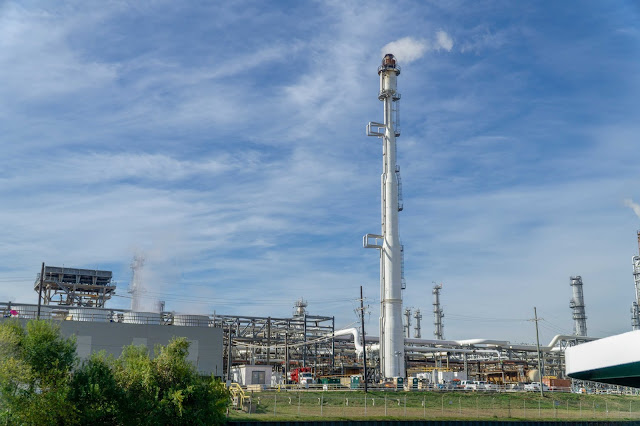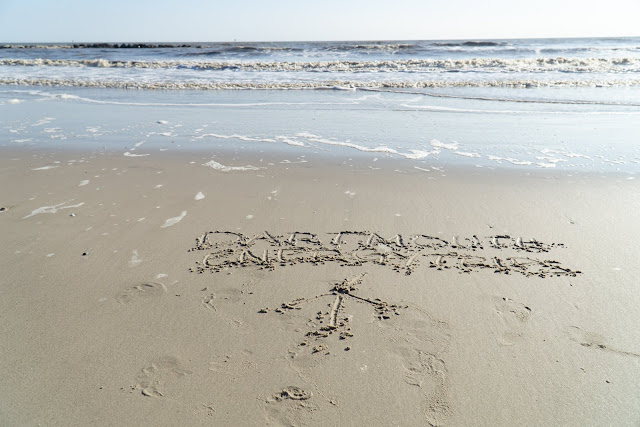Houston, Day Two
From Boat to Classroom to Alumni Dinner: a Glimpse into the Refining and Export of Petroleum
We enjoyed the beautiful weather today on a boat tour of the Port of Houston followed by a lunch in Hermann Park. We were joined by Dartmouth ‘78 William Fraizer who has years of experience in the petroleum industry from his work at Chevron and as the current VP of Technology Development at Eunike Ventures. As we stood on the prow of the M/V Sam Houston, a narrator provided us with a history of the port over a speaker. We learned that the ship channel that we were sailing through used to be the Buffalo Bayou but was dredged in 1914 to allow larger vessels to transport cargo to and from Houston. Now, the Port of Houston is the largest port in the Gulf Coast in terms of container traffic. Many of us were struck by the sheer scale of the petroleum industry while on the tour, as dozens of oil tankers and petrochemical plants lined the channel.
 |
During the boat tour, Will pointed out the different parts of a refinery, such as a distillation column, furnace and fluid catalytic cracker. Will then explained how these parts worked in a classroom at the University of Saint Thomas. In just two hours, we learned about the technical aspects of refining petroleum interspersed with social, economic and environmental impacts. I found it extremely interesting to learn about how crude oil becomes many different products, such as gasoline and number six fuel oil, and how the ratios of these products obtained depends on the refining process and the properties of the particular crude oil. Will also provided examples of how refineries attempt to mitigate their air and water emissions. For example, storage tanks with domed floating roofs help capture and eliminate volatile organic compound emissions. Another main idea of the lecture was that shifting fuel standards and regional politics have greatly impacted the evolution of the refining process. Our discussion with Will reminded us that in order to grasp the economic impact of the energy industry, you have to consider not only the energy companies themselves, but also contractors, manufacturers of components such as pipelines and drill bits as well as all of the other companies tied to the energy industry. This point reiterated the complexity and large influence of energy systems in our society.
 |
After our crash course on oil refining, we headed back to our lodging to regroup before a dinner with Dartmouth alumni involved in the energy industry. The alumni dinner took place on the top floor of the Hanover Southampton apartment building, so we were surrounded by stunning views of downtown Houston illuminated in the night. The information covered in our first two days helped us navigate conversations with experienced members of the industry, showing us just how much we have already learned. We look forward tomorrow to visiting ExxonMobil and continuing to expand our knowledge of the petroleum industry.
 |
Today’s events allowed us to see and hear about the size and complexity of refinery infrastructure which, in combination with viewing the enormous offshore oil rigs at Gulf Copper and the oil fields at Denbury Resources yesterday, has helped elucidate the scale of the industry. However, in doing so, the challenge of finding a lower carbon energy source that is equally affordable at the same scale seems more difficult. The huge structures seemed to demonstrate the notion of being “locked in” to fossil fuel infrastructure that has been mentioned in some of my Environmental Studies classes at Dartmouth and communicated that our current energy infrastructure is not going anywhere anytime soon. I am therefore looking forward to seeing how my perspective changes after visiting the wind farms later this week. As the trip progresses, I am excited to see how gaining the perspectives of many different stakeholders both clarifies and complicates our understanding of our energy system.
-Emma Esterman '20


Comments
Post a Comment